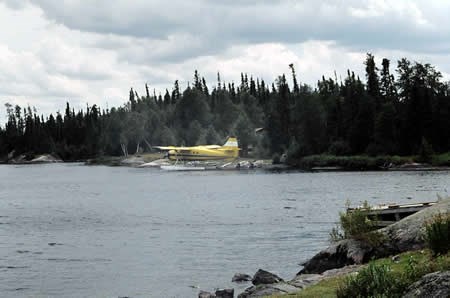Seasoned outfitter Dick Harlock has no shortage of criticism for the province’s new assessment system for unincorporated territories, a shift that will cost him tens of thousands of dollars when it comes into effect in 2009.
“It’s more than a little frustrating,” says Harlock, owner of the Gogama Lodge and president of Derry Air.
“It’s already nearly impossible to get Americans up here, what with soaring gas prices and the problems they’re having with their economy. My insurance costs have also gone up, and with prices skyrocketing all around, I don’t know what we’re going to do.”
While properties in unincorporated areas are being assessed at 1940s rates, the move to bring them to current values, or the current value assessment (CVA), is having many impacts on different people.
For Harlock, this is directly felt through the Ministry of Natural Resources (MNR), which is bringing up the value of properties on Crown land for the purpose of charging fees for their use.
Through negotiation with groups like the Northern Ontario Tourism and Outfitters (NOTO) association, all commercial outpost camps have been assigned a value of roughly $16,000.
In exchange, permit holders have a 10-year period in which to phase into a 30-year renewable lease, which will allow for holders to seek mortgages and provide the security of long-term tenure.
This new cost represents a significant jump for Harlock, who has run commercial camps for more than 40 years and operates 18 throughout the North.
Whereas the standard 5 per cent fee for the land use permit had previously been $125 per property, it now stands at $800 each. For 18 camps, this translates to nearly $14,400 per year, up from $2,250.
What’s more, each property now needs to be officially surveyed, which carries a cost upwards of $2,000 apiece.
Doug Reynolds, executive director with NOTO, says the $16,000 value represents a weighted average of camps across all of Northern Ontario, which varied widely from region to region. He hails this component of the deal with the province as being fair, particularly as prior fees were minimal and could hardly be seen as representative of the property’s true worth.
Harlock acknowledges that although the previous value had indeed been a bargain, the sudden jump is simply too much, too fast.
“Had the government gradually moved it up, even bringing it to $350 or $500 over time, nobody would have said a word,” Harlock says. “Now I’m expected to pay up in January 2009 with no time for additional income, and after having been financially beat up this year.”
However, the impact of the move to CVA extends beyond the effect on leasing values to the MNR.
It will also require a separate assessment of all buildings on all unincorporated territory properties by the Municipal Property Assessment Corporation (MPAC), which in turn will result in a new provincial land tax (PLT) rate. This extends to all lands in those areas, be they residential, commercial or industrial.
This process is something with which Reynolds takes issue, branding it as unnecessarily complex and lacking in transparency for his members.
All businesses seeking to make use of Crown land must already submit detailed site plans outlining what’s to built on the property. This not only means MPAC’s visits represent a duplication of data gathering, it’s also a waste of taxpayer dollars as they frequently must pay thousands of dollars for each charter flight into a remote property, says Reynolds.
“There’s nothing wrong with paying market value, but do it competently,” he says. “If the $16,000 value is good enough for lease payments, why isn’t it good enough for land tax purposes?”
He also wondered about whether the change in tax would be fair given the complete lack of service often seen in these areas.
This question was mirrored by the many angry business owners and private citizens who attended the Ministry of Finance’s information sessions held throughout the North in August.
The move to CVA was necessary for a variety of reasons, said ministry representative Susan Ghan at the packed Sudbury session.
The biggest sticking point, she said, was years of having to back-scale assessments to 1940s rates, which created any number of administrative issues and complicated citizens’ abilities to appeal their assessments.
She was also quick to point out that the provincial tax is revenue-neutral. This means that from 2009 to 2012, half of those affected will see their PLT drop. Of those who will see an increase, 90 per cent will see an increase of less than $150.
Commercial and industrial properties in these areas will see a set tax, fixed at 0.0012 and 0.0006, respectively.
This means that a commercial property assessed to be worth $50,000 will see an annual PLT rate of $60, while an industrial property worth the same will see a PLT rate of $30.
When asked whether taxes could rise further after 2012, Ghan replied that the ministry had to take direction from the government, drawing an eruption of jeers.




